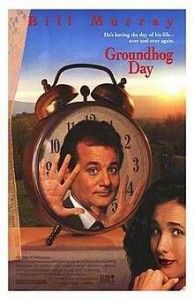Gov. Brown’s Budget ‘Holds Kids Hostage’
JAN. 6, 2011
By KATY GRIMES
In Gov. Jerry Brown’s world, welfare recipients are cashing in, while school children continue to get short-changed.
Brown released his 2012-13 budget plan Thursday, warning that spending on K-12 schools, state universities and courts will be reduced if California voters fail to pass his $7 billion tax-increase initiative in November.
Brown said his plan would eliminate the deficit and pay down debt — but only if California voters pass his tax increase initiative. If not, automatic trigger cuts will go into effect and cut K-12 school spending by $4.8 billion, state university spending by $400 million, and the state’s courts by $125 million. “These are not nice cuts, but that’s what it takes to balance the budget,” he said.
The governor said the state’s budget shortfall for fiscal year 2012-13, which starts July 1, 2012, was $9.2 billion. He said that number was more manageable than the $26.6 billion deficit the Legislature produced for the current budget year, fiscal 2011-12, which ends on June 30.
Brown said he was making more cuts to the state’s welfare and health programs. But in a “Groundhog Day” moment, Brown insisted, “This is an honest budget, and a sign of good things to come,” the same point he made during last year’s budget proposal.
But the reality in California is that the state’s welfare system receives more money than K-12 education. And the top 1 percent income and corporate taxpayers pay for nearly everything. “The 1 percenters should be partying with the mayor in Oakland,” a Capitol pundit told me.
Education Spending Confusion
At his press conference, Brown continued to sell “schools in need.” However, he is merely “ramping up entitlements in non-education areas while continuing to hold school children hostage,” said one education expert who asked to remain anonymous.
The governor said that eliminating education-spending mandates, and removing restrictions on class sizes, was a way to give school districts more flexibility to spend their money as they saw fit.
“If they think they can save some money by adding a few kids to class, then they should be able to do that,” Brown said.
Brown’s latest budget proposal was released five days earlier than planned because the budget was leaked out. This new budget proposal will spend $92.5 billion next year, $6 billion more than the previous budget. And it assumes voters will support more tax increases.
But with each update of the budget, the deficit appears to get smaller, due to a slight improvement in California’s economy. If spending continues to outpace revenues, the state budget can never be balanced.
“The governor and legislators need to reform California’s perpetually flawed budget process and examine every department and every expenditure of government,” Assemblyman Jim Nielsen, R-Gerber, told me. “A performance-based or a zero-based budget, with a hard spending cap and a reserve, would be a very good start.”
Deja Vu All Over Again
“It’s not wine and roses — it’s a very prickly path,” Brown said of the budget cuts. Brown explained that because the state of California is generous with social programs, “when we have to reduce, it has to come from the programs that are doing well — the public service programs.”
“The problem was worse than we thought,” Finance Director Ana Matosantos said about the budget last year. However, Brown attributed “missing the mark” to the federal government refusing to allow California to reduce Medi-Cal payments.
But Brown insisted that this is an honest budget, just as he did last year.
Ramping Up State Spending
After delivering the bad news, Brown got excited when talking about increasing spending in some areas. “California is recovering. Fiscal health is improving. People in California can feel more confident,” Brown said.
Then he talked about increasing spending and the “bold moves” he plans on making with High-Speed Rail, alternative energy and water. “We are the innovator state — Apple Computer, diversity, international trade, Hollywood — but we’ve got our problems.”
And there was no mention at the conference of Brown’s proposal to create an entirely new state agency, the Department of State Hospitals, found on pages 13-16 of the state budget.
A memo from the governor explained the creation of the new state hospitals department, “To create an efficient system of care focusing on effective treatment and increased worker and patient safety, the Budget establishes a new Department of State Hospitals.”
The budget also “reflects the first year of implementation of the AB 32 Cap and Trade program.” However, many are questioning where and how AB 32, the Global Warming Solutions Act of 2006, gives the Governor the authority to raise the money, and put it in the general fund.
The governor’s plan states, “Through a market approach, the program will create fiscal incentives for businesses to reduce their greenhouse gas emissions. The proceeds generated from the program, potentially $1 billion in the first year, will be used to invest in clean energy, low-carbon transportation, natural resource protection, and sustainable infrastructure.”
A market compliance approach doesn’t necessarily mean that it’s a monetary system. Therefore, this spending would need a two-thirds approval from the legislature, something that the governor does not currently have.
It’s also unclear what will happen with taxes, as several other tax-increase measures could be on the ballot this November.
Similar to the “Groundhog Day” movie, every day Californians wake up with the same governor advancing the same tax increases to pay for the same excess spending.
Related Articles
Republicans Block Redevelopment Vote
MARCH 17, 2011 By KATY GRIMES With many predicting that yesterday’s budget vote in the Legislature was just going to
CA Budget Still Needs Fumigation
Feb. 22, 2011 By JOHN SEILER As Gov. Jerry Brown and the state Legislature continue crafting a budget, skunks keep
Redevelopment is Prop. 13 in Reverse
JUNE 28, 2011 by WAYNE LUSVARDI To California redevelopment advocates, the policy brings the Midas touch to cities, turning everything




